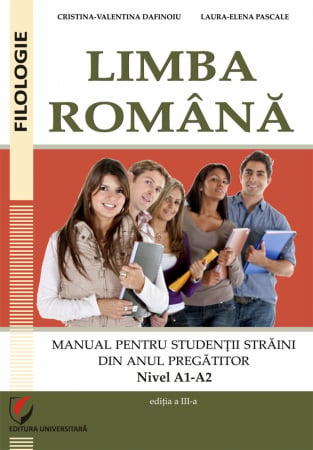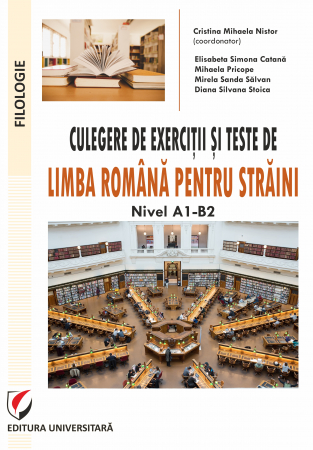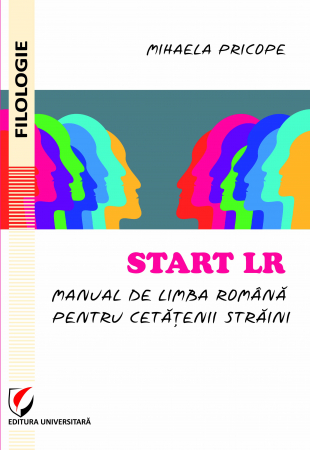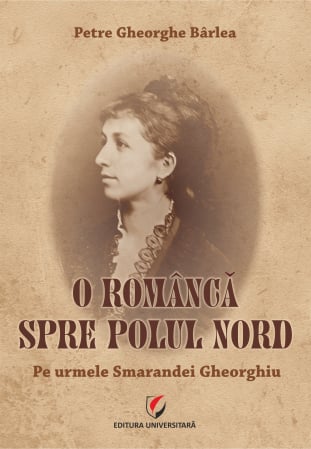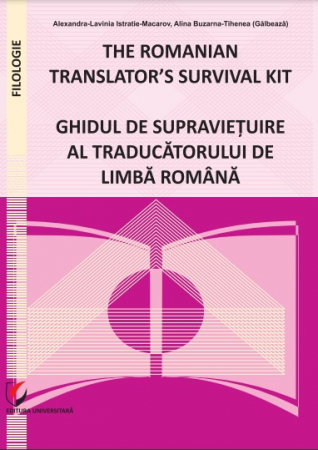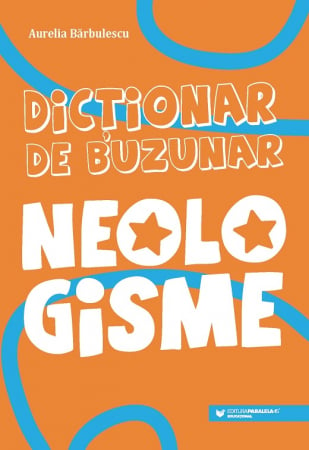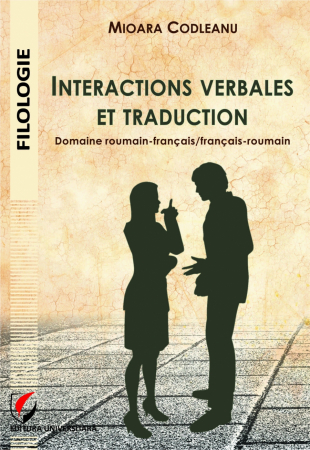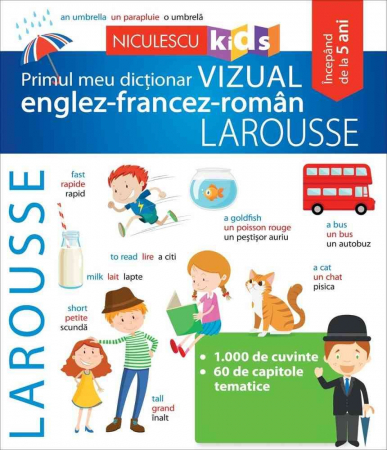ISBN: 978-606-28-0539-5
DOI: 10.5682/9786062805395
Publisher year: 2016
Edition:
Pages: 222
Publisher: Editura Universitară
Author: Cristina Mihăescu
- Description
- Download (1)
- Authors
- Content
- More details
- Reviews (0)
-
Istorie si metaistorie in romanul celui de-al Doilea Razboi Mondial
Download
I. Literature and history (general considerations) / 9
II. Narrative - common denominator of history and literature / 15
II.1. Metahistory / 19
II.2. Hayden White - Metahistory. Historical imagination in nineteenth-century Europe / 21
II.3. Hayden White on Metahistory / 25
II.4. Critique of Metahistory / 28
III. The historical novel (general considerations) / 32
III.1. Perspectives on the evolution of the European historical novel: Georg Lukács, Richard Maxwell, Jerome de Groot, Brian Hamnett / 37
II.2. The Romanian historical novel / 50
IV. The last world war and the collapse of Romania in the Romanian epic of Dinu Zarifopol / 79
IV.1. History and metahistory in the Sumariot cycle / 87
IV.2. The shipwreck / 94
IV.2.1. Action / 95
IV.2.2. Ramurenii / 103
V.2.3. Characters / 112
IV.3. The death of Lev / 140
IV.3.1. Part one / 140
IV.3.2. Part two / 164
IV.3.3. Part three / 183
IV.4. Sah la rege / 193
IV.5. The crime of the general / 203
V. Conclusions / 210
Bibliography / 217
Nicolae Manolescu observed several times that we do not have a history of the Romanian novel, the last time in 2012: “I wondered, more than once, why we do not have a history of the novel, as the generations of critics before us - they asked why we don't have a novel. More than a decade ago, when the Gramar publishing house launched the collection of 101 Romanian novels, I was asked to write a study dedicated to the history of the Romanian novel. For various reasons, I could not honor the proposal and, with the approval of the editors, I replaced it with Arca lui Noe, a study already published in two editions, which was printed and reprinted until one day, in tranches, by Gramar, in several tens of thousands of copies. The idea of a true history of the genre in our country, following Albérès's model for the European novel, let's say, preoccupied me later, even after I published Istoria critica. Neither the Arca lui Noe nor the Istoria critica were, strictly speaking, a history of the novel. The ark, because it adopts a narratological perspective, Critical History, because it inevitably fragments the history of the novel, mixing it with that of other genres ”. In fact, the critic further details, “we have both a novel and a history of the genre, even if the latter has never been detached from the literary nebula. The most important attempts, of Lovinescu, from the first decades of the XX century, of Calinescu and Camil Petrescu from the 1930s, rather suggest the evolution of the genre and have a normative character, not a historical one. In addition, the trials in question are the innocent victims of preconceived ideas, because they do not start from the verifiable historical reality of the novel. "
Observations on the need for a systematic study of the Romanian novel, historical or morphological, have been made for a long time, starting from the modern complexity of the genre and its multiple functions. Pompiliu Constantinescu observes since 1928 that “starting from the historical reality, prose acquires its prestige from the myth of fiction; the epic world is a superstructure, faced with raw reality. In the social moment we seek to fix an inner universe with its laws and cataclysms, with perspectives of phosphorescent lights in the mystery of the human soul. " To this general vision, G. Calinescu opposed (or rather adds to it) the mythological vision, from which derives Sadoveanu's historical novel: “A natural face of regressions towards patriarchal times is the historical novel. In general, it is based on instinctual life, and not on the observation of complex inner humanity ... "(G. Calinescu, storia literaturii romane de la origini pana in prezent,, 2nd ed., Revised and added. Ed. And preface by Al.Piru, Bucharest, 1982, p. 622).
This research starts from much more modest intentions, which does not consider - of course - the whole history of the novel, nor that of the historical novel, but to offer to those who will try to do it a case study placed in the perspective of a modest incursion. in the theory of the historical novel and of some applications, with some circulation in the European critical space. I tried this parallel incursion, theoretically and in that of a Romanian historical novel, using as analytical material a very little known novel, as I considered it preferable to discuss a text that is not accompanied by judgments already established and consolidated and which it is, at the same time, a social and historical fresco of an epoch close to our generation. Unknown directly, the epoch has left its mark on our contemporary history and is already reflected in various works published before and after 1989, but none, I think, of the breadth, authenticity and strength to which we have dedicated this modest recovery effort. . These are the four volumes of the epic cycle written before 1989 by Dinu Zarifopol and published between 1994 and 1999: Naufragiul, Moartea lui Levi, Sah la rege and Crima generalului.. Being about a practically unknown author until the appearance of the volumes and also by an intellectual from a family who also gave writers to our literature (he is the nephew of the brother of the essayist Paul Zarifopol and the nephew of the sister of the poet Dimitrie Anghel), but who manifested from the high school years literary desires, I thought it useful to start the chapter dedicated to his novels with a short biographical foray.The presentation and analysis of the novels required quite extensive forays into the theme, vision and character of the world that populates them, thus focusing on moments, couples or groups of characters and covering various geographical areas, successively forming several centers of interest. Attempting to recover a tetralogy that we believe deserves a special place in the history of Romanian literature "drawer", but also of postwar Romanian literature in general, the following research tries to contribute to the discussion of the Romanian historical novel in a framework comparatively and theoretically in proportion to the importance of this genre, sometimes easily considered a minor genre, on the border between documentary and mythology, often falsified by the propaganda projection of an era that revives historical figures only for the benefit of a megalomaniacal leader.

6359.png)
![History and Metahistory in the Novel of the Second World War - CRISTINA MIHAESCU [1] History and Metahistory in the Novel of the Second World War - CRISTINA MIHAESCU [1]](https://gomagcdn.ro/domains/editurauniversitara.ro/files/product/large/istorie-si-metaistorie-in-romanul-celui-de-al-doilea-razboi-mondial-477-86176.jpg)
